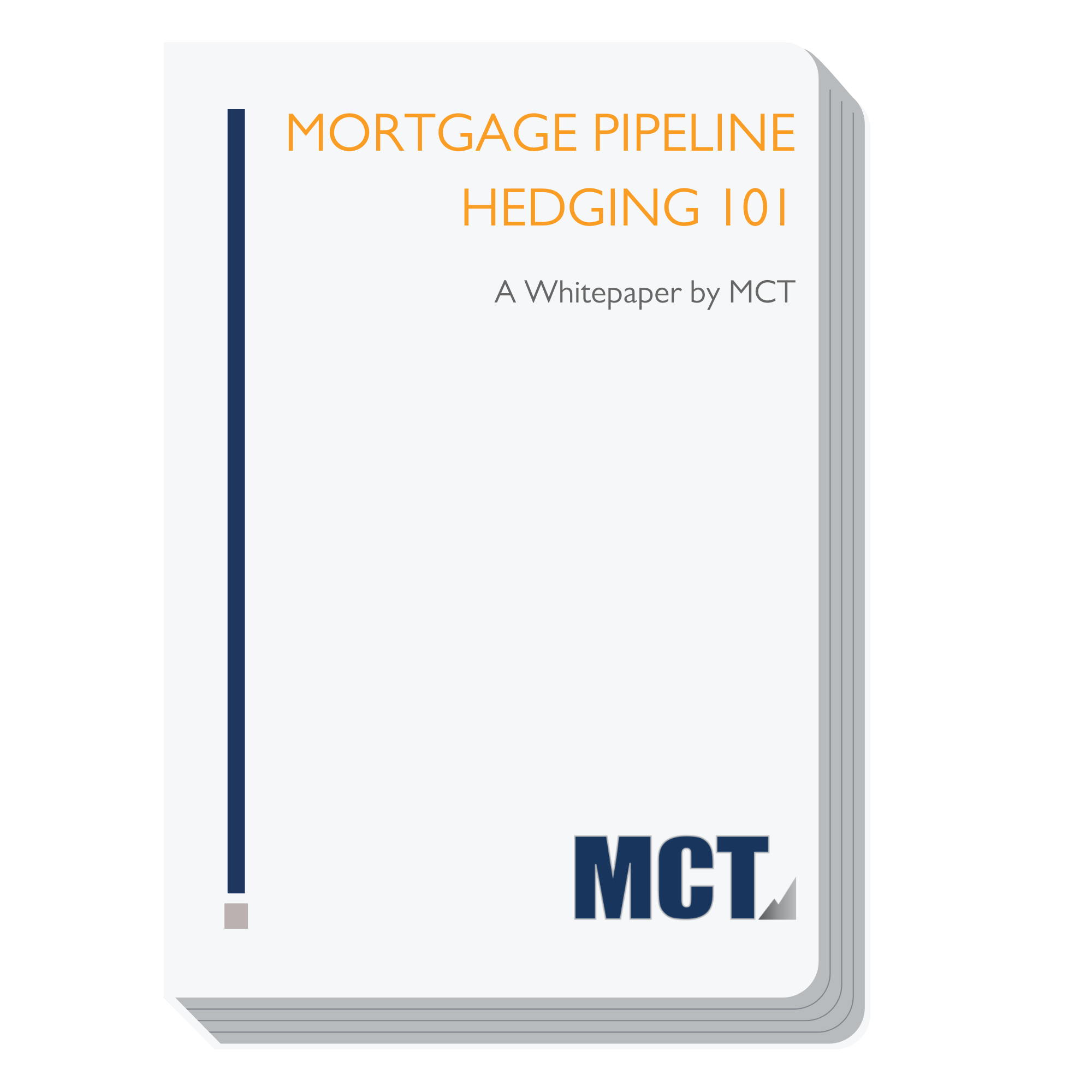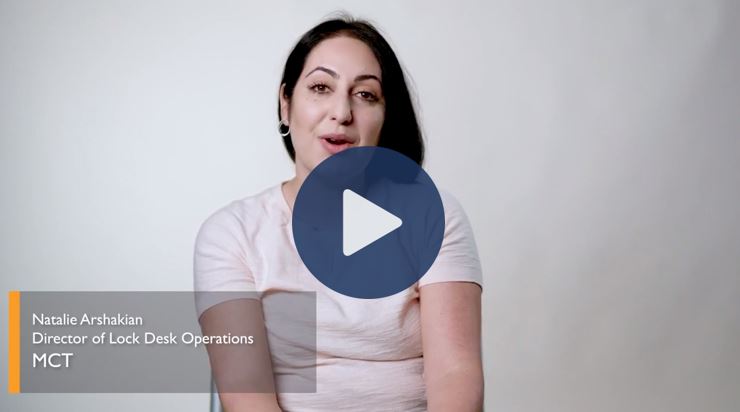Updated June 5, 2023
In this blog, our MCT secondary market professionals dive into our effective hedging strategies designed to empower you in navigating the ever-changing rate environment. In today’s dynamic financial landscape, staying ahead of market fluctuations is of utmost importance to protect your business.
At MCT, we recognize the significance of proactive risk management strategies when it comes to interest rate risk management, hedging assistance, investor services, and mortgage servicing rights. Our team of experienced professionals has diligently crafted this blog to offer you practical insights specifically regarding effective hedging strategies, enabling you to mitigate risks and optimize your financial position. Join us as we demystify the complexities of hedging and equip you with the necessary tools to confidently navigate the rate environment.
- What is Hedging in the Secondary Market?
- Why Should a Company Consider a Hedging Strategy?
- What are Some Hedging Strategies for Reducing Pipeline Volatility?
- What Factors Should be Considered When Developing a Hedging Strategy?
- MCT Software Service Solutions
It is important in hedging a pipeline to use a constant, disciplined approach. This is best regardless of volatile, or non-volatile, mortgage-backed security environments. When choosing risk management strategies to best suit your company, we don’t advise lenders to change their policies or procedures based on volatility, but instead to have a “steady hand” on daily hedging tactics.
What is Hedging in the Secondary Mortgage Market?
Hedging is a risk management strategy used in finance to limit the potential risk exposure of financial assets. It involves taking offsetting positions in derivatives that help to protect against potential losses. This tool is commonly used in the stock market to protect portfolios from market volatility. Hedging can also be used in the secondary market, where it is employed to ensure that the price change of a group of loans is offset by the value of a change in the hedging instrument. Additionally, it is possible to use hedging techniques to optimize the performance of investment portfolios. By employing hedging strategies, investors can protect their portfolios from market downturns, while still achieving portfolio appreciation over the long term.
Why Should a Company Consider a Hedging Strategy?
Though hedging is often mischaracterized as risky, the goal of hedging is to minimize potential losses and protect against market volatility. Therefore, it’s a great strategy to utilize to maximize profitability when an effective hedging strategy is done correctly. Interest rate changes that occur between the time a borrower locks a loan and when the loan is funded can leave originators at risk. In the current market environment, we’ve seen increased volatility that has led to day-over-day and often intraday price changes. This is why interest rate risk management needs to be top of mind when dealing with any best ex strategy, and hedging can be helpful for mitigating risk. Hedging protects the mortgage asset from market fluctuations by taking an offsetting position in a similar asset. By hedging your pipeline and understanding how market changes affect your pull-through rate, you will be better protected from the risks associated with mandatory loan sales. There are many benefits to hedging your pipeline that outweigh the associated risks. The most notable is the price differential between selling loans best efforts and moving to mandatory.
Historically, the mandatory lift over best efforts has been roughly 25 BPS or more, more than netting out the cost of the hedge. Additionally, hedging improves control with processes, procedures, and policies (e.g., extensions, rate renegotiations, lock and shop/extended locks, etc.) related to secondary marketing operations.
Benefits range from improved operational efficiencies to decreased operational expenses, and more flexibility on certain loans. It is time-consuming to lock loans best efforts and upload files to investor websites. Both locking loans and processing any changes to the loan are easier to do in your own LOS rather than on an investor website. Instead of underwriting to one investor and being stuck with them, you can underwrite to a wider set of guidelines. Don’t be hemmed in to one set of policies. And when delivering loans, it is easier on shipping departments to do one or two loan sales a week versus selling individual loans.
Reach out to our Client Success Group to make sure you are taking full advantage of the benefits of hedging.
What are Some Hedging Strategies for Reducing Pipeline Volatility?

Some effective hedging strategies for reducing pipeline volatility in the secondary mortgage market include diversification, index options, volatility hedging, and most importantly a robust best execution analysis. An intentional and well-developed best execution analysis (best ex) is the key to maintaining your overall profitability, even in down market cycles. And an aggressive loan sale strategy is what we currently recommend. MCT offers the most robust best execution analysis of any firm in the mortgage capital markets. MCTlive! is the most powerful platform available for day-to-day loan pipeline management, trade positions management, and loan sale best execution. The platform was engineered to put the capital markets function we provide in the hands of our customers, allowing you to build your capital markets competency inside your own shop. Many of the complex yet repetitive tasks required of secondary marketing have been automated within MCTlive!, freeing your time and resources for other high-value functions.
The best execution analysis model within MCTlive! prices out every avenue possible for your loan sales. This secures that lift over best efforts, whether it is through bulk bids, selling to the agencies, MCT Marketplace buyers, utilizing AOTs, etc. And that mandatory to best efforts spread is still there, even after spreads were blown out in 2020 and 2021: Year to date for 2023, on average we are seeing 33 BPS for conventional spreads and 29 BPS for government volume.
Improvements in the accuracy of your pull-through rate, optimizing your investor set, and monitoring your pipeline will help you earn more on your loan sales when done correctly. This is impacted by investor set, product mix, how you present upfront pricing to your LOs, and data integrity. Data integrity is vital if you want to measure lift over best efforts. Measurements are only as good as the data. Remember that updating pricing with data changes or lock extensions is a best practice. Mark-to-market reporting shows pipeline changes day over day. Data integrity is the most important aspect of what we do for a living and helps to make informed hedge decisions.
What Factors Should be Considered When Developing a Hedging Strategy?
 The client’s risk tolerance and financial goals are the first and foremost items to look at when developing a hedging strategy. Working with a professional to help you capitalize on hedging can improve your chances of maximizing profitability and mitigating risk. Let’s look at some changes throughout the loan process that will help you achieve tangible pickup.
The client’s risk tolerance and financial goals are the first and foremost items to look at when developing a hedging strategy. Working with a professional to help you capitalize on hedging can improve your chances of maximizing profitability and mitigating risk. Let’s look at some changes throughout the loan process that will help you achieve tangible pickup.
Scrutinize and analyze front end pricing, in addition to running best ex analysis at the time of lock. In 2020 and 2021 it was easier to manage margins because they were so wide. Sacrificing 20 – 30 BPS wasn’t such a big deal, but now with volumes compressed the industry has been forced to prioritize profitability in any way possible. And when it comes to that upfront pricing, run your best execution analysis up front. How far out in front is the best ex investor versus the cover investor?
We are in an environment where rate sheet pricing can change frequently, making it crucial to pay attention to the pricing coming in. Identifying outliers or anomalies in pricing can mean taking the loan best efforts rather than bringing it into hedge in cases when bulk pricing cannot keep up with a red-hot best-efforts price. If you do see an outlier, ensure you maximize profitability and squeeze out every basis point possible, even if it means a slightly smaller hedge. Look at rate sheets and note where different note rate cutoffs are. This not only promotes pickup on the back end, but also forces you to analyze the type of production being brought into the hedge to make sure it’s a viable hedge candidate.
The market has current coupon ranges of 5 to 7. That makes best executing TBA bids, if you will, more important than usual. When putting on a corresponding TBA trade, you may be in a position where when the market moves you can’t get out of that TBA at an attractive price. And if you can’t get out of that trade at an executable fair price, the bid ask spread could widen to a point where it severely steps on your execution. It is worth best ex’ing loans on front end and back end, as well as TBAs on front end. Finally, not every investor or broker dealer takes AOTs, so you need viable investors and broker dealers set to be able to take those AOTs. There is an AOT column in MCTlive! showing you who will accept automated triparty agreements from broker dealers.
What is the lock period in which you are looking to lock the loan? Most people are locking for 30 days, but if that loan takes 30 days to fund, you still have to best ex, commit, and deliver the loan, which will take additional days. Additionally, sitting on that loan for a couple extra days to bulk up a loan sale can make that package more attractive to your investor set. If either of those factors are in play, price to a 45-day price and put in that buffer. Give yourself extra margin to help expense for taking a few extra days of hedge to cover that extra cost. Pricing engines do have tools to help you build in a desired buffer. Put a buffer in if the front-end price is too aggressive for hedge and put some parameters behind it, 20 – 50 BPS depending on your company. Reach out to your trader for a production price to the street and think about what production you want to bring into your hedge. Make sure the loans you are originating are good candidates to sell mandatory.
Consider this when developing a hedging strategy:
- Identify your actual risk tolerance
- Analyze your financial goals
- Run best ex analysis up front
- Sit on a loan for a couple extra days to bulk up loan sale
Ready to dive deeper? Download our latest whitepaper!

For those of you inevitably thinking that competing for every mortgage out there in this tough environment makes it hard to put in extra margin, you don’t have to sit on the loan for all the days of an extended lock. One silver lining in the current lower volume environment is more resources to push loans out the door quicker and truncate the delivery period. What was 15 days delivery could now be cut to seven, or maybe down to two or three days for the agencies. That will get you a slightly better price and is something you should take advantage of. Tighten that delivery window, if possible, or keep it in your back pocket for flexibility to waive extension fees on front end to help borrower.
On the back-end, your best ex should be unbiased if you are trying to execute to the top price, whether that is via best efforts bulk, or mandatory delivery. Some of the current higher note rates are being adversely priced by investors, so in specific cases the best efforts price is substantially beating the bulk price for certain note rates.
With our hedge advisory services, our team of experts works with your secondary market staff to create a daily cycle of disciplines for successful pipeline management. Whether you are making the move to mandatory executions, seeking improvements to your mortgage pipeline management process, or considering a change in your hedge advisor, MCT’s Hedge Advisory blends technology and service to achieve your goals. As the industry leader in pull-through analytics and best execution with the highest staff-to-client ratio, lenders of every size trust MCT to manage their risk management strategy and optimize profitability in their mortgage loan pipeline management with our expert professionals and loan trading platform success.
Our Business Intelligence software, the most comprehensive secondary market analytics tool on the market, is fantastic for a variety of reasons. MCT clients are provided with aggregate proprietary mortgage pipeline and loan sale data from MCTlive! allowing for the opportunity to compare aspects of their secondary market data to their peers and to the MCT average. Among other things, see who is hot or not in the current environment and optimize your investor set using quantitative insights.
MCT Marketplace within our MCTlive! software system shows you other investors you don’t have prior relationships with and allows you to include them in your best ex analysis. This gives you more options and a streamlined process to set up and commit the loan.
If you adhere to these practices in this tough environment and even seek out professional help, you are putting yourself in the best possible position. It’s worth exploring all execution options and talking to us, both for your bottom line and overall enterprise viability.
Related Articles:




